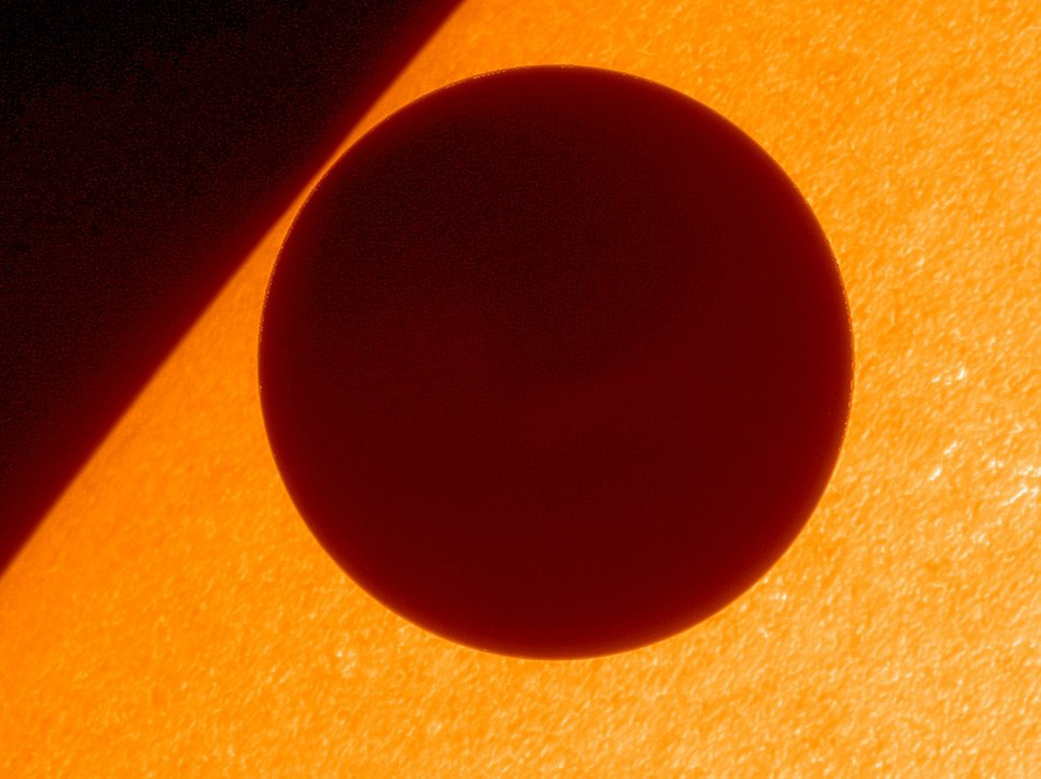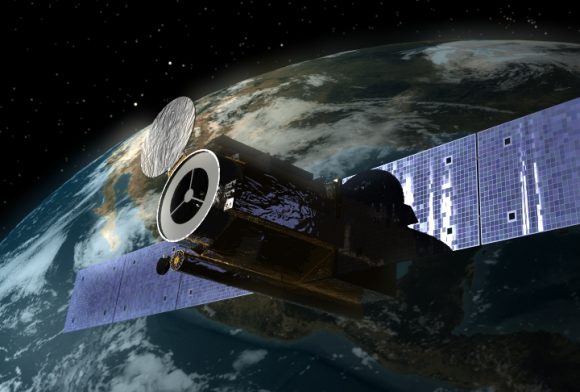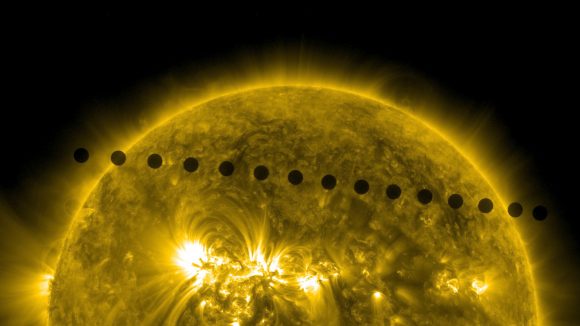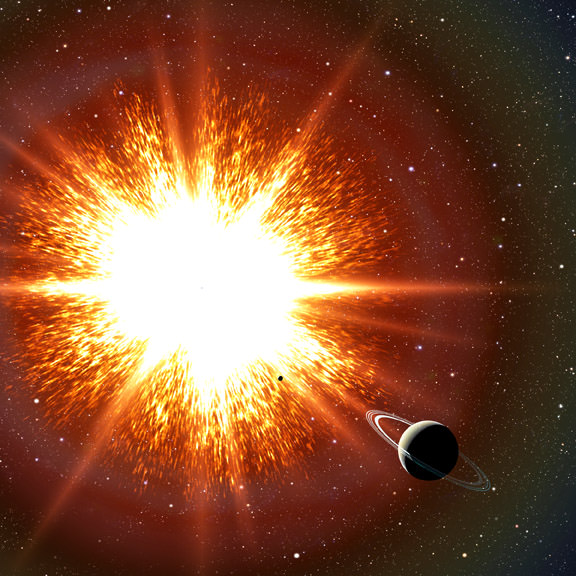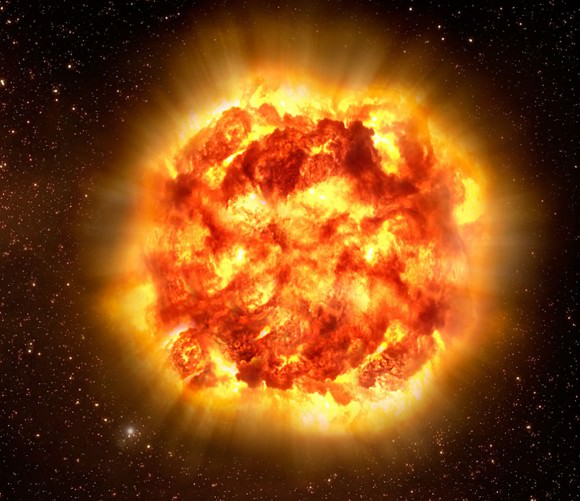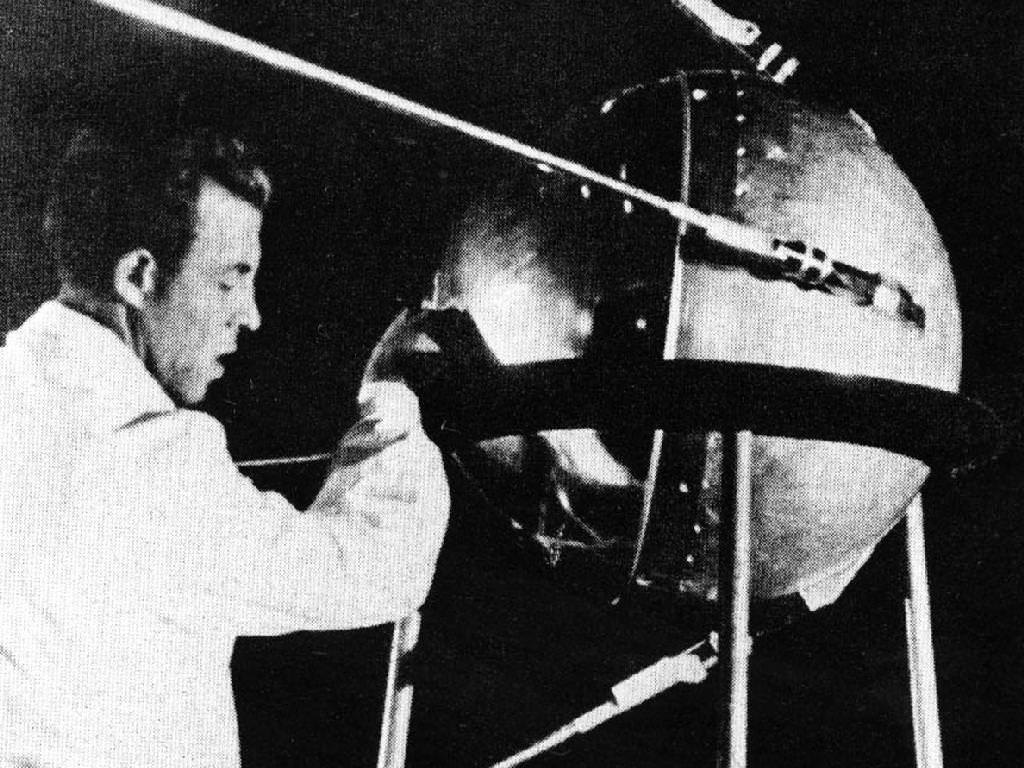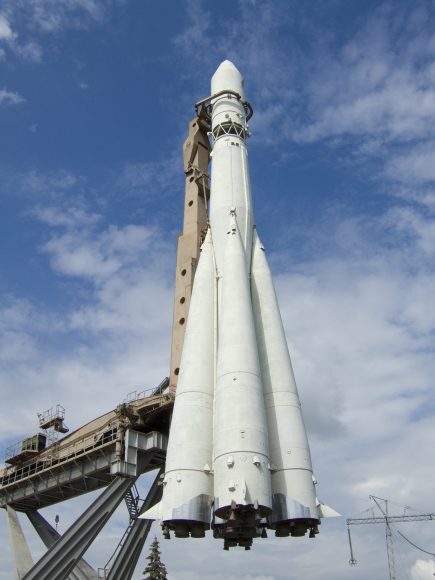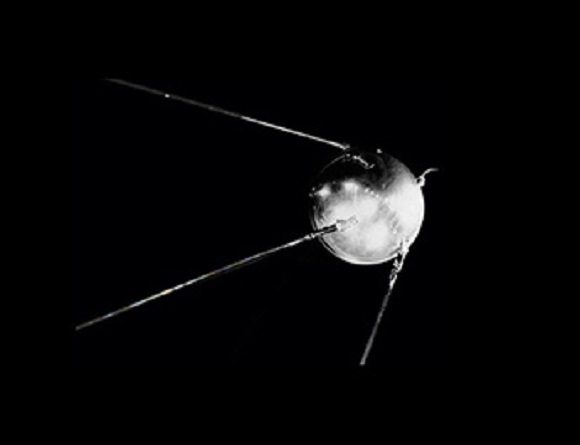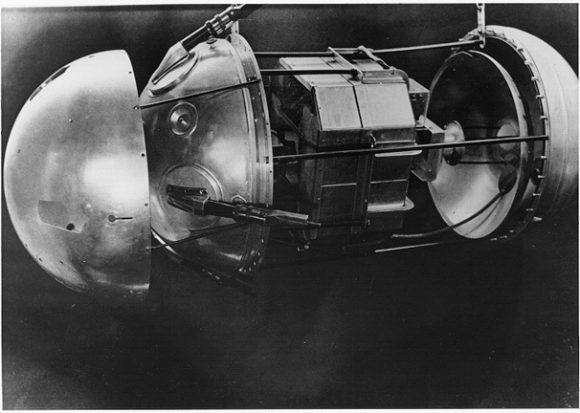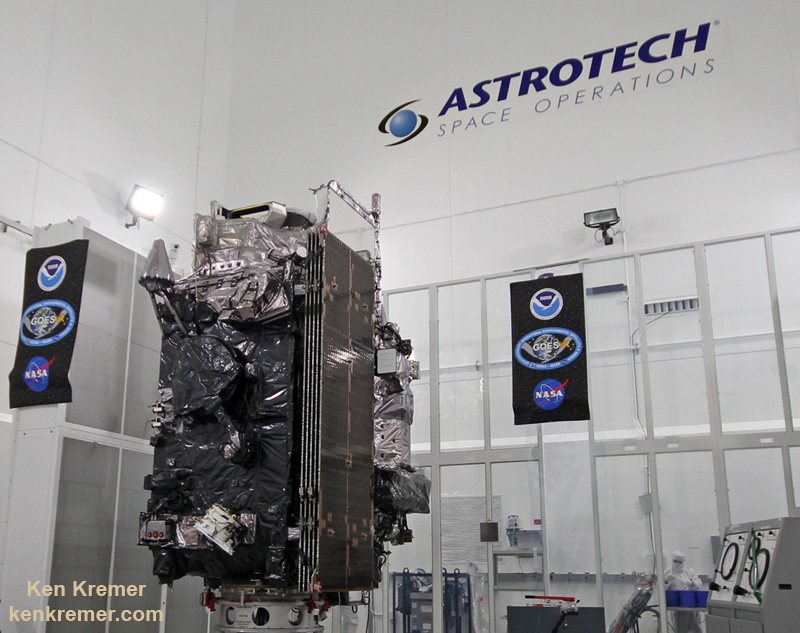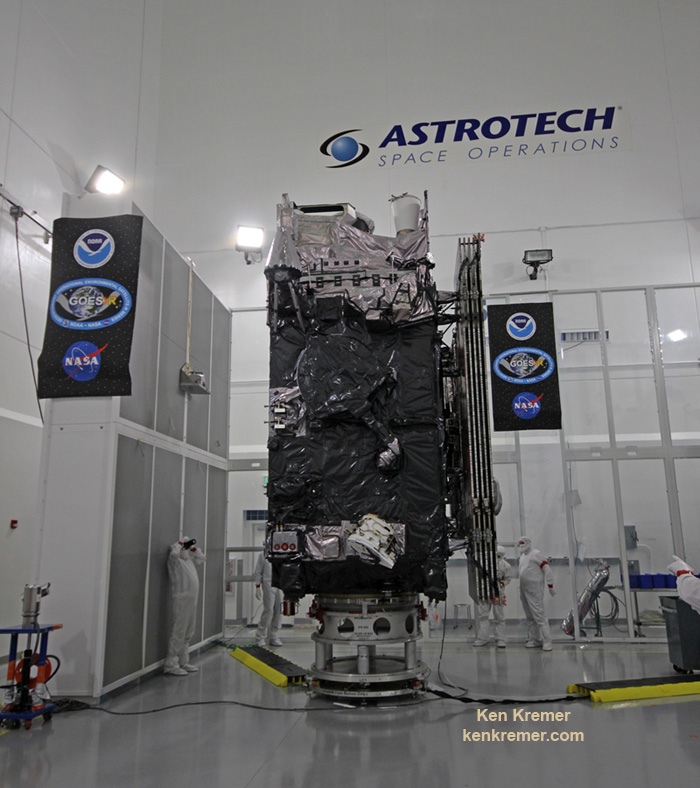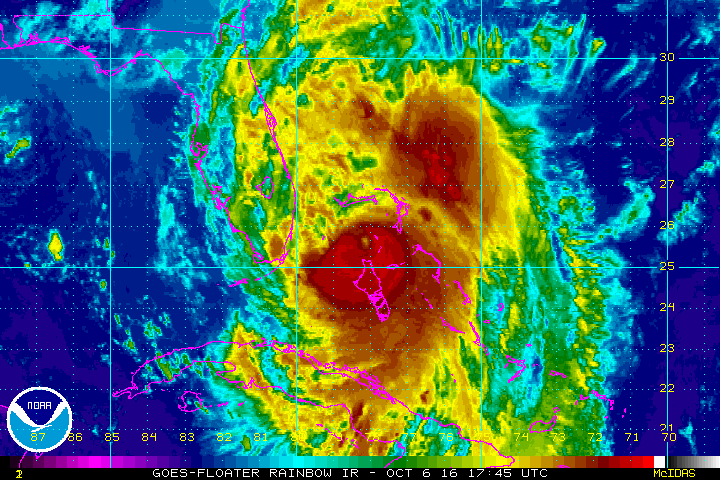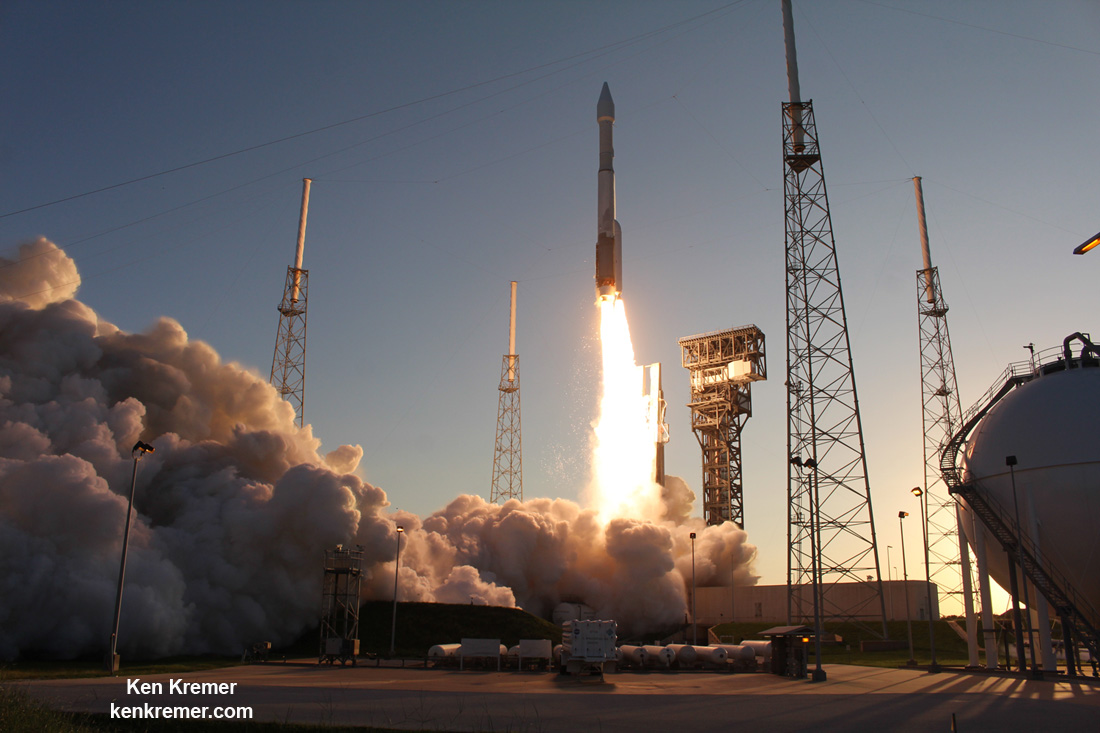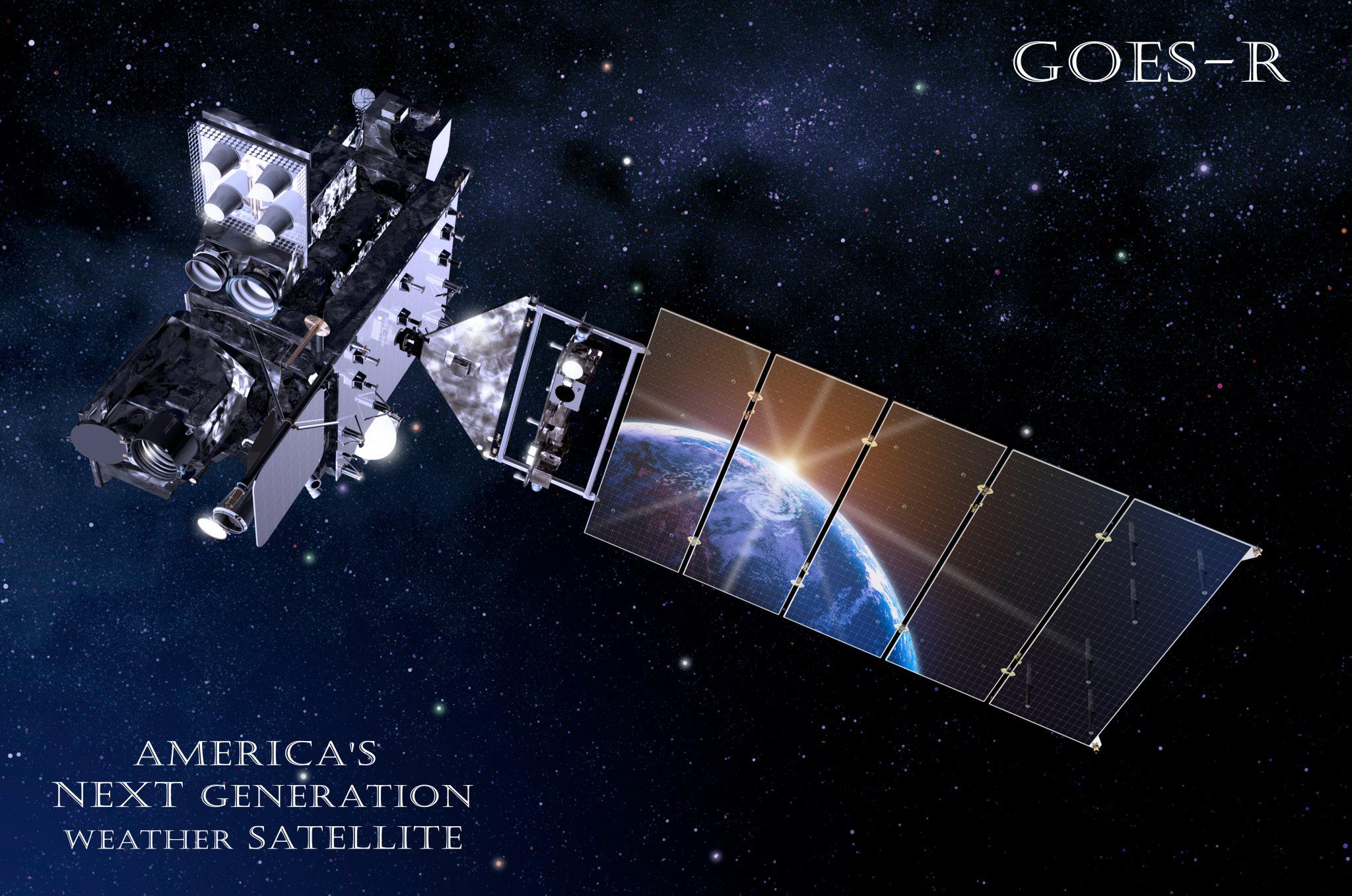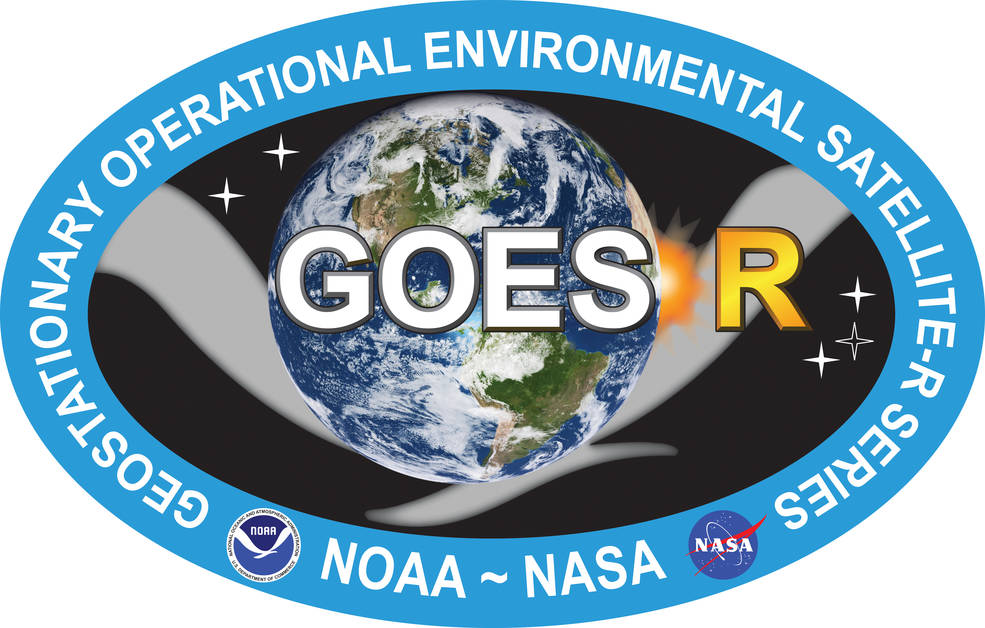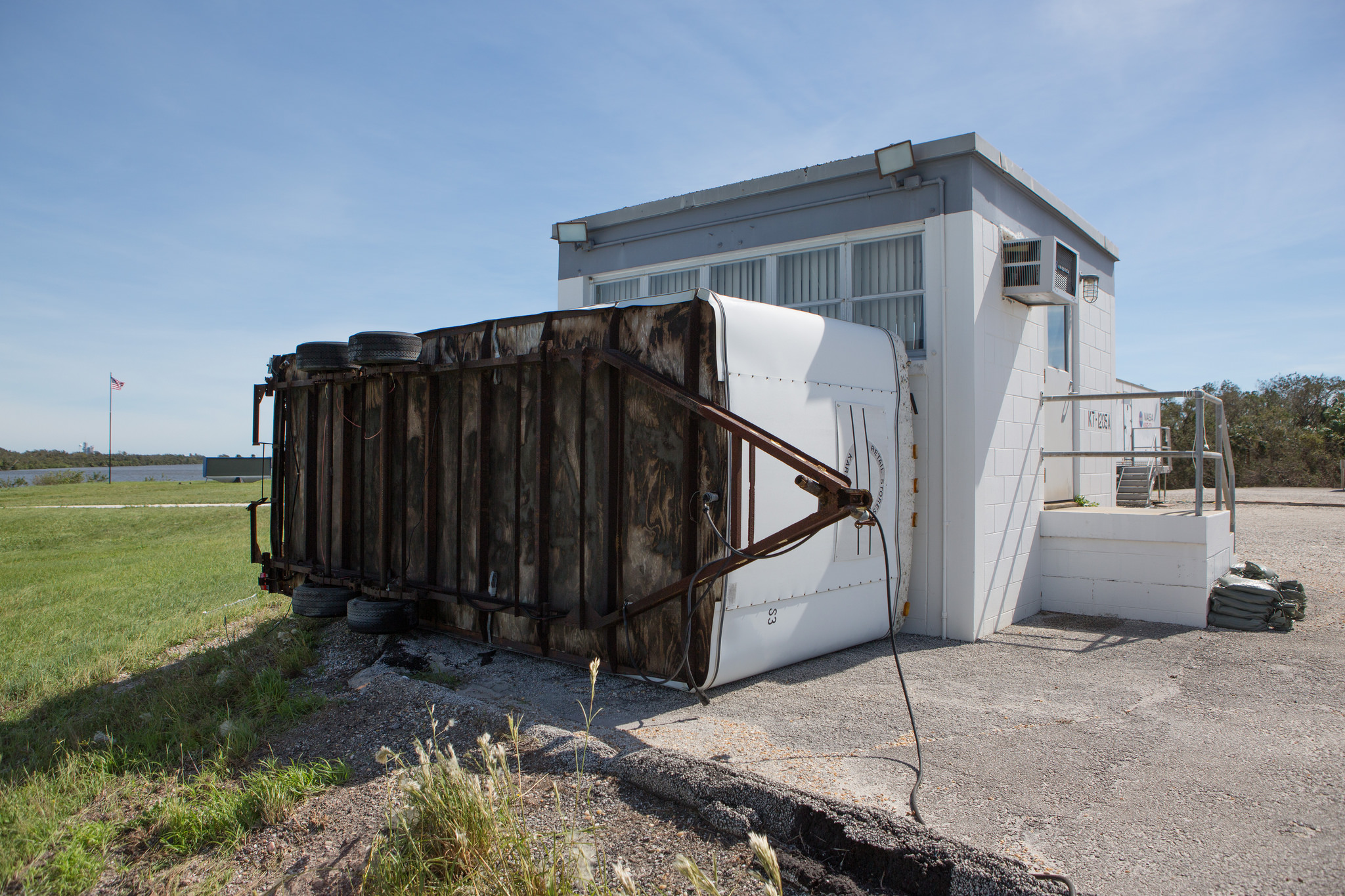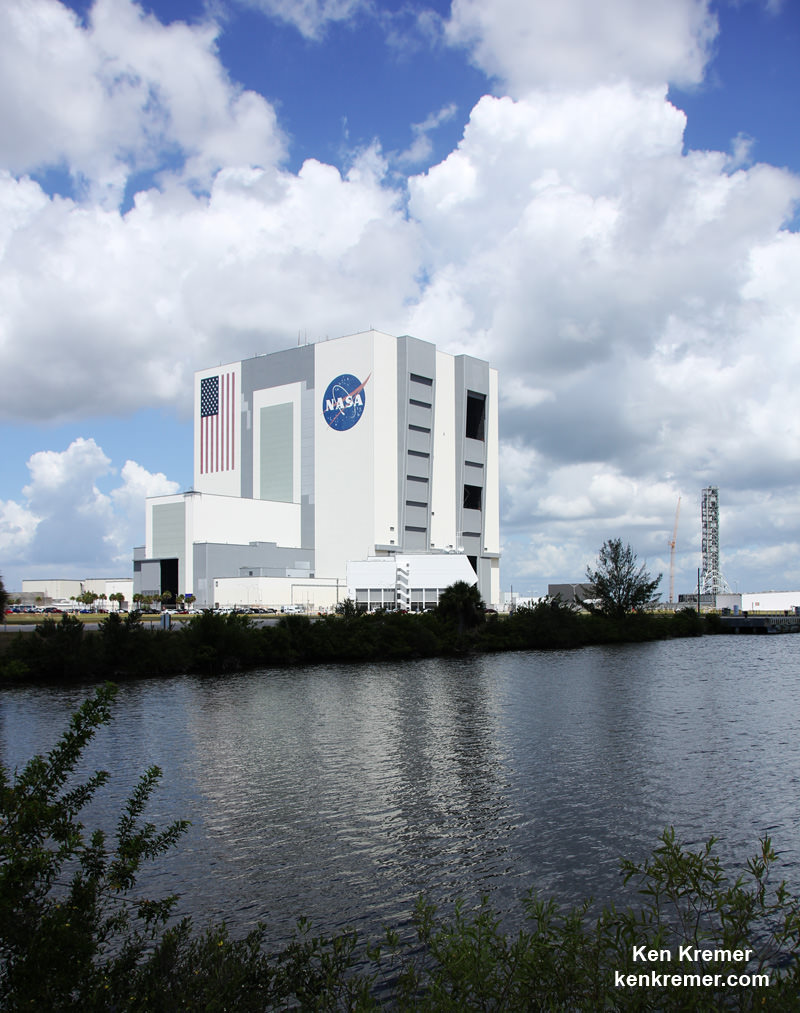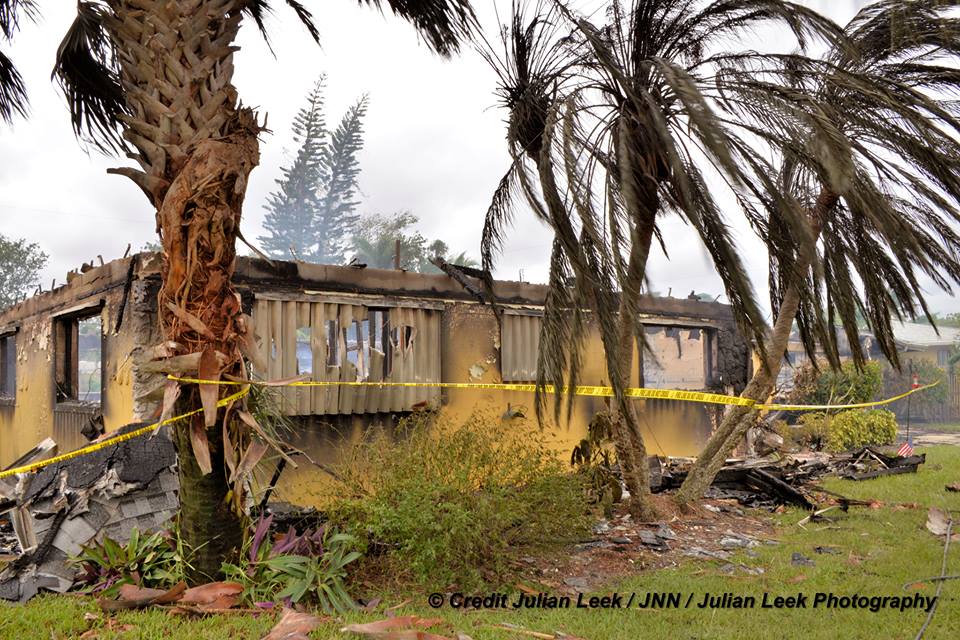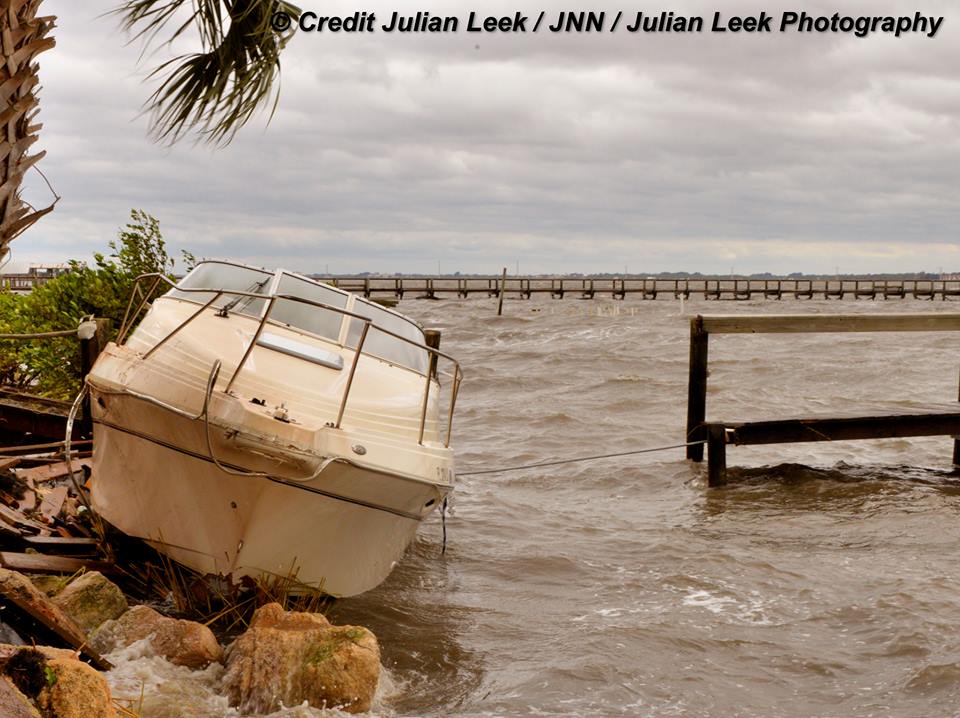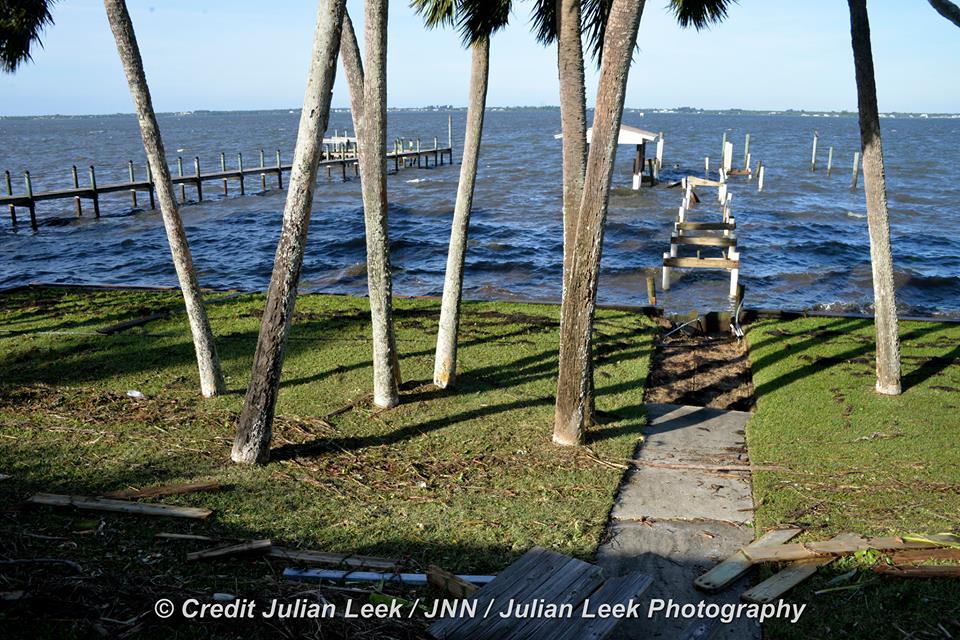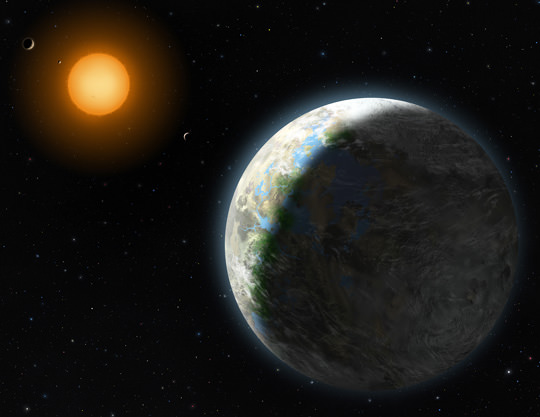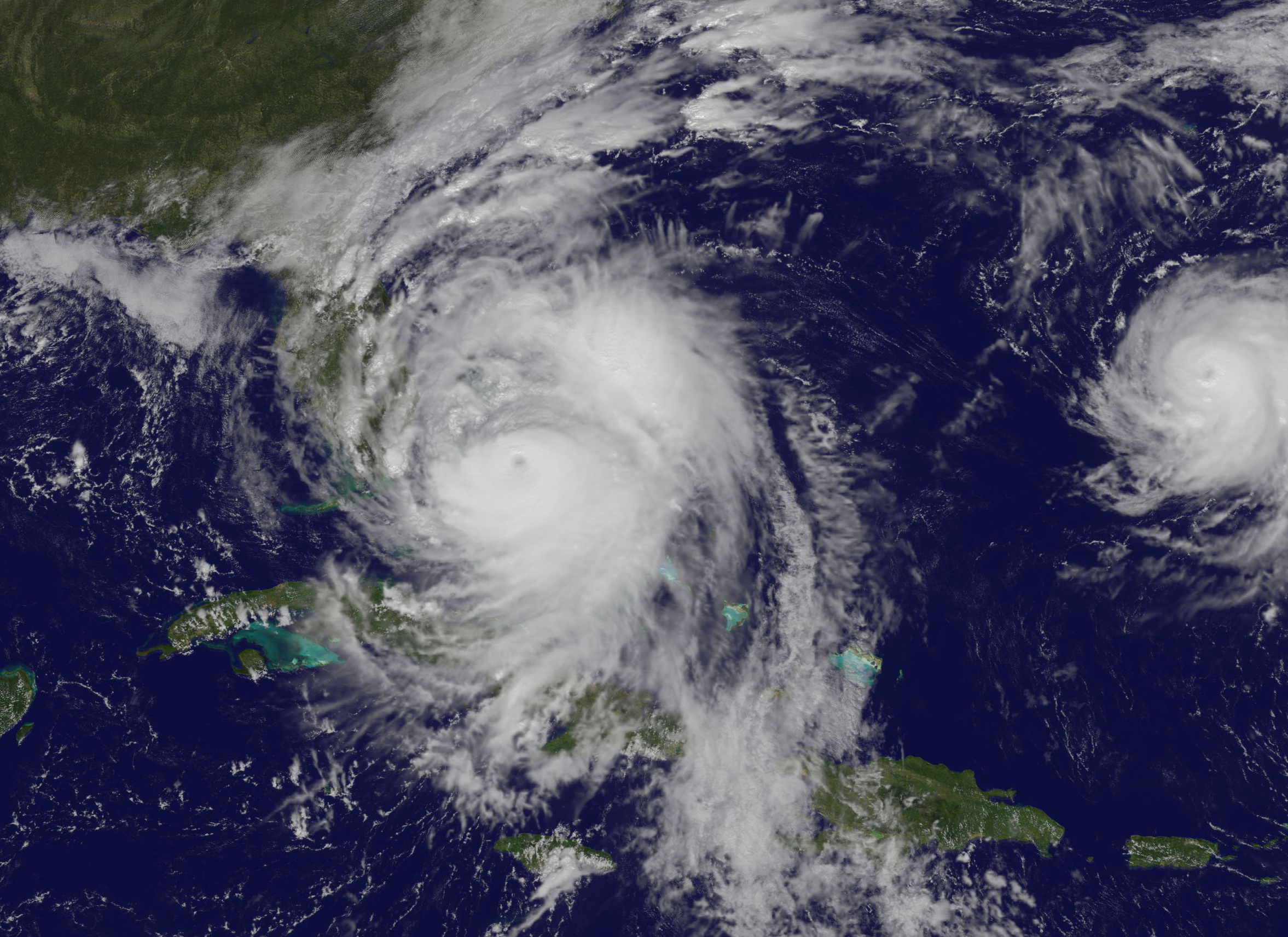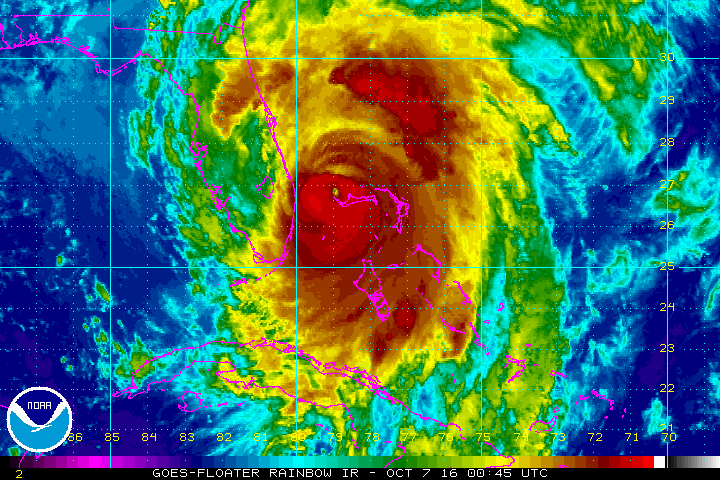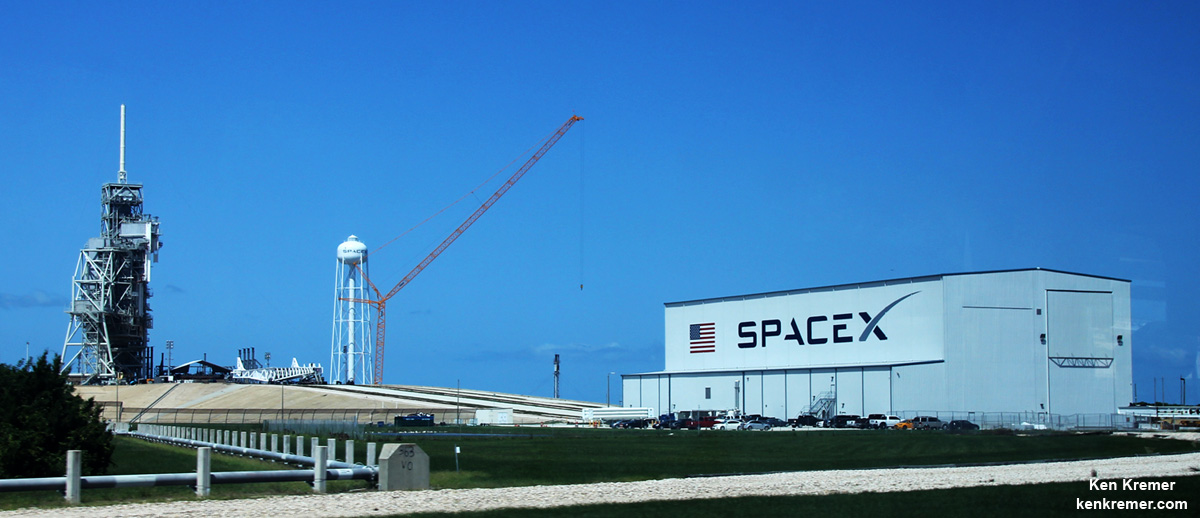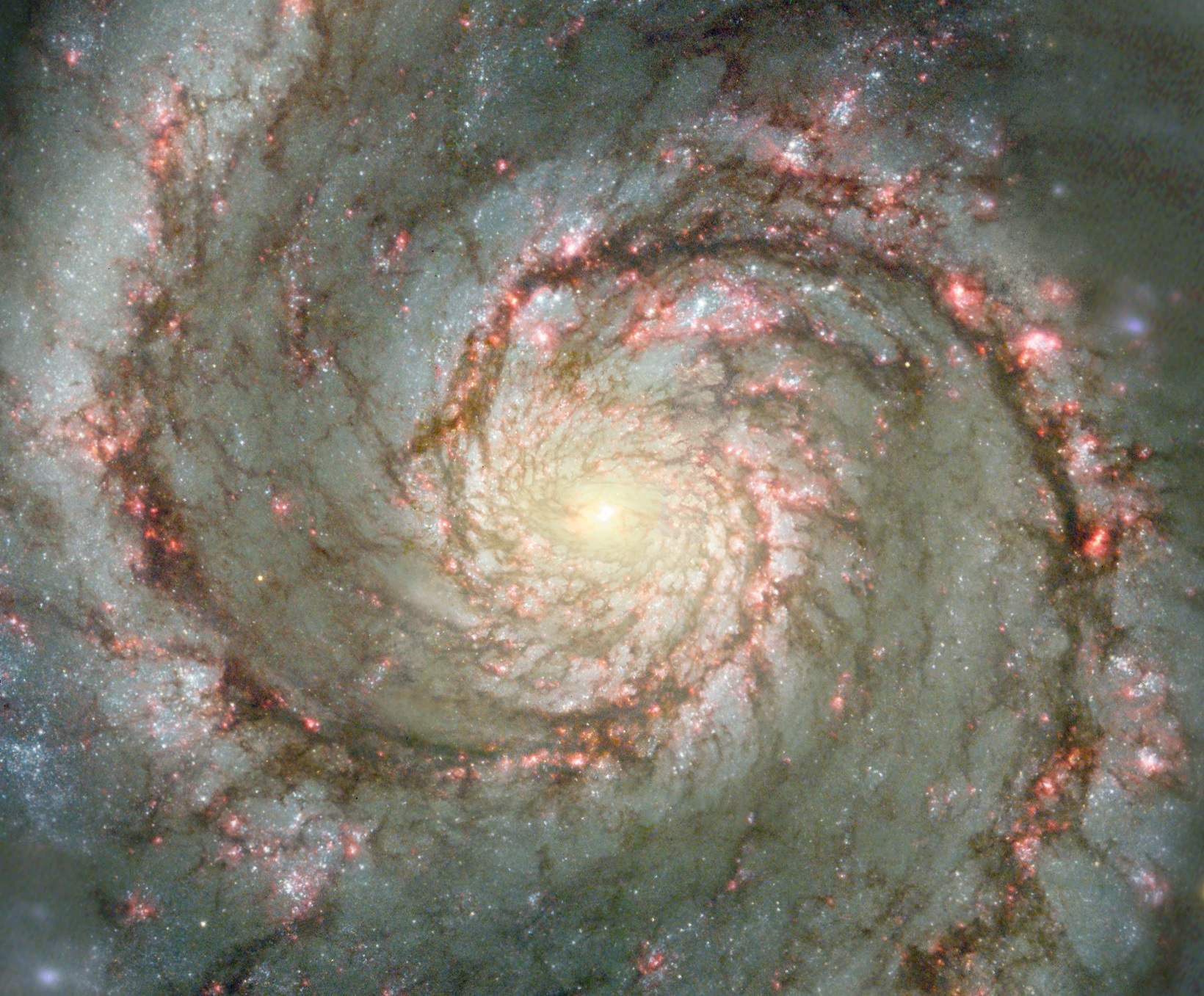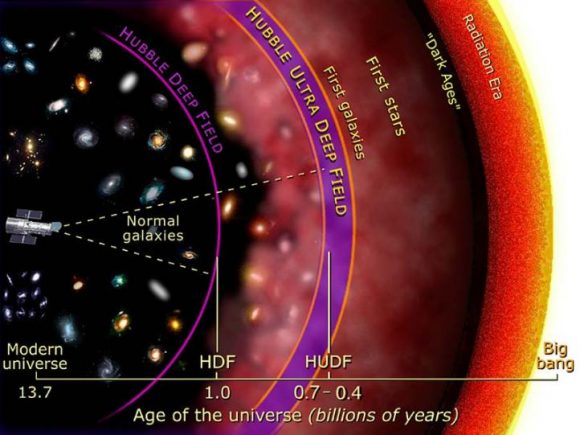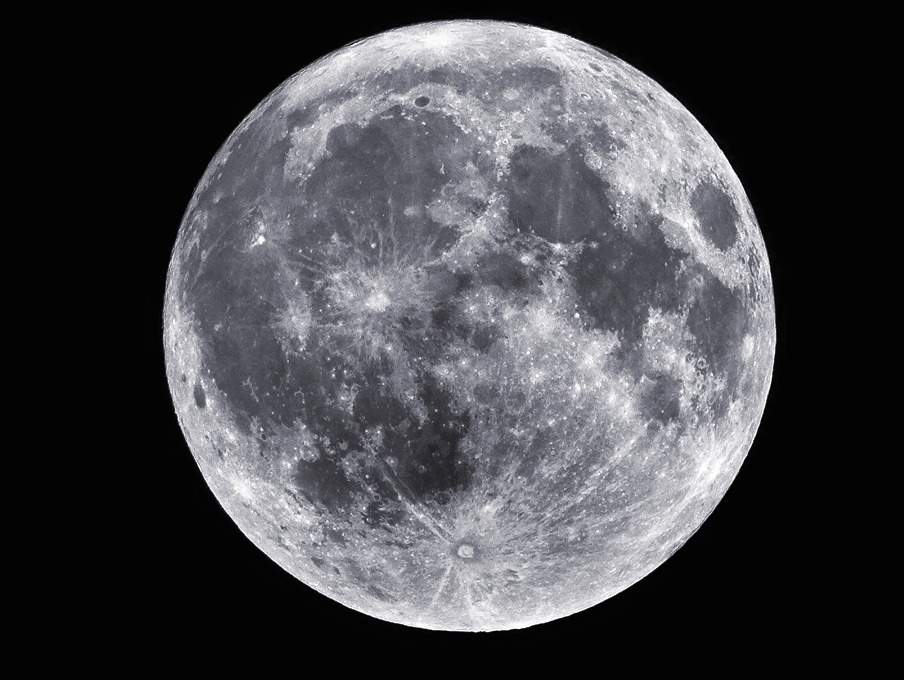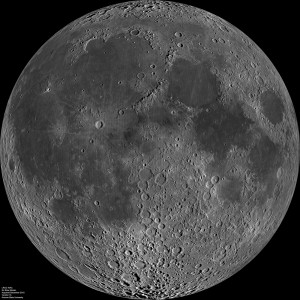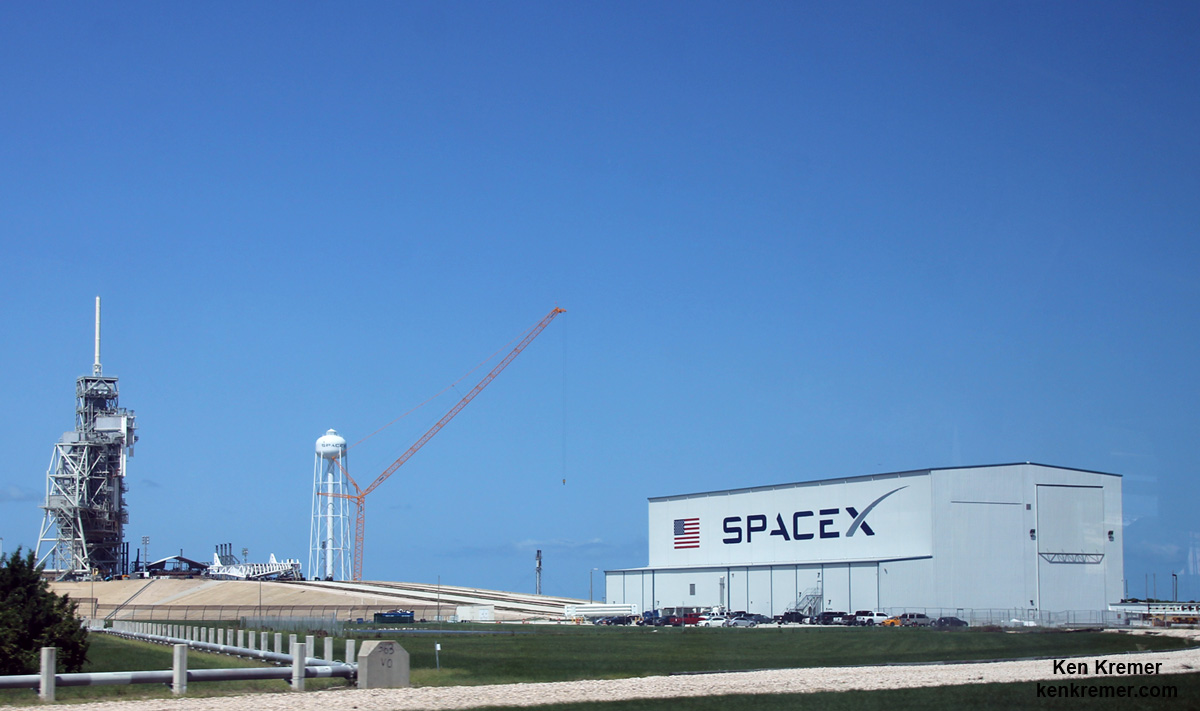
SpaceX’s key launch facilities on the Florida Space Coast escaped the wrath of Hurricane Matthew’s 100 mph wind gusts late last week, suffering only some exterior damage to the satellite processing building, a company spokesman confirmed to Universe Today.
Furthermore, the aerospace firm still hopes to resume launches of their Falcon 9 rocket before the end of this year following September’s rocket explosion, according to remarks made by SpaceX President Gwynne Shotwell over the weekend.
“Hurricane Matthew caused some damage to the exterior of SpaceX’s payload processing facility [PPF] at Space Launch Complex-40 at Cape Canaveral Air Force Station,” SpaceX spokesman John Taylor told Universe Today.
The payload processing facility (PPF) is the facility where the satellites and payloads are processed to prepare them for flight and launches on the firm’s commercial Falcon 9 rockets.
Some exterior panels were apparently blown out by the storm.
The looming threat of a direct hit by the Category 4 storm Hurricane Matthew on Friday, Oct. 7, on Cape Canaveral and the Kennedy Space Center (KSC) forced the closure of both facilities before the storm hit. They remained closed over the weekend except to emergency personal.
The deadly storm also caused some minor damage to the Kennedy Space Center and USAF facilities on the base.
Meanwhile competitor ULA also told me their facilities suffered only minor damage.
However the base closure will likely result in a few days launch delay of the ULA Atlas V rocket carrying the NASA/NOAA GOES-R weather satellite to geostationary orbit, which had been slated for Nov. 4.
The PPF is located on Cape Canaveral Air Force Station, a few miles south of the Falcon 9 launch pad at Space Launch Complex-40 (SLC-40).
The PPF is inside the former USAF Solid Motor Assembly Building (SMAB) used for the now retired Titan IV rockets.
Fortunately, SpaceX has another back-up facility at pad 40 where technicians and engineers can work to prepare the rocket payload for flight.
“The company has a ready and fully capable back-up for processing payloads at its SLC-40 hangar annex building,” Taylor elaborated.
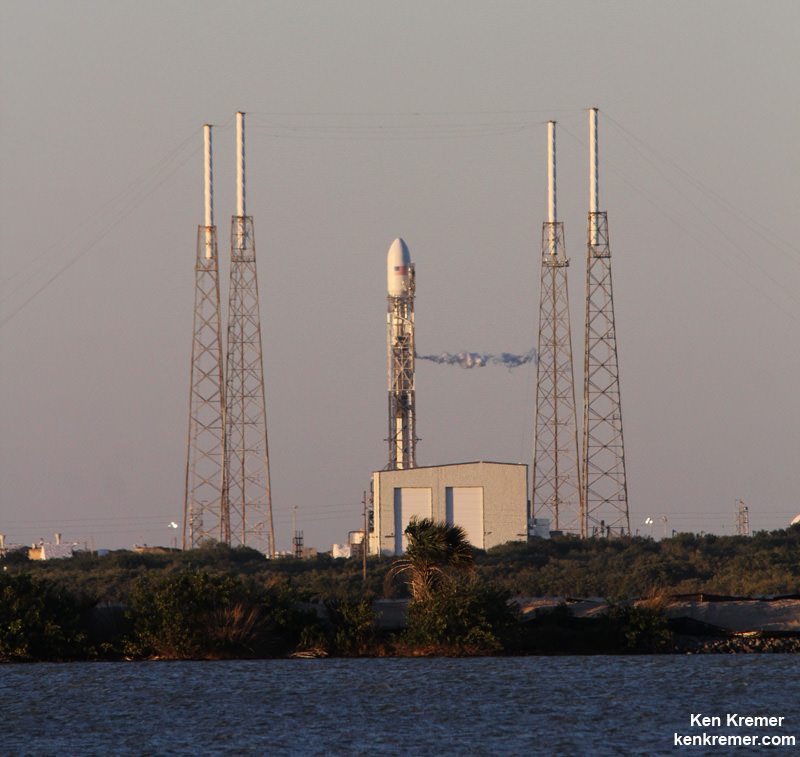
And except for the minor damage to the PPF facility where payloads are processed, SpaceX says there was no other damage to infrastructure at pad 40 or to Launch Complex 39A at the Kennedy Space Center.
“There was no damage the company’s facilities at Pad 39A at Kennedy Space Center,” Taylor told me.

However SLC-40 is not operational at this time, since it was heavily damaged during the Sept. 1 launch pad disaster when a Falcon 9 topped with the Israeli Amos-9 comsat exploded on the launch pad during a routine prelaunch fueling operation and a planned first stage static fire engine test.
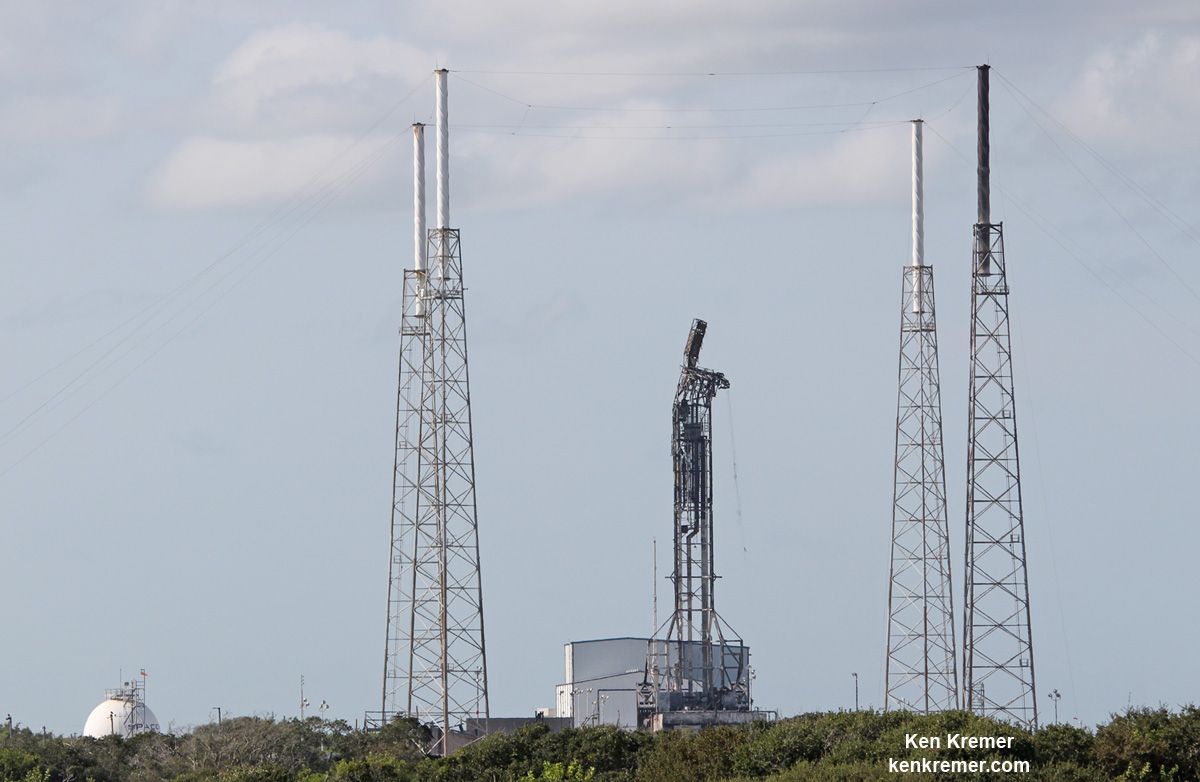
As SpaceX was launching Falcon 9 rockets from pad 40, they have been simultaneously renovating and refurbishing NASA’s former shuttle launch pad at Launch Complex 39A at the Kennedy Space Center (KSC) which they leased from NASA.
SpaceX plans to start launching their new Falcon Heavy booster from pad 39A in 2017 as well as human rated launches of the Falcon 9 with the Crew Dragon to the ISS.
However, following the pad 40 disaster, SpaceX announced plans to press pad 39A into service for commercial Falcon 9 satellite launches as well.
SpaceX President Gwynne Shotwell recently said that the company hoped to resume launches in November while they search for a root cause to the pad 40 catastrophe – as I reported here.
Speaking at the annual meeting of the National Academy of Engineering in Washington, D.C. on Oct. 9 Shotwell indicated that investigators are making progress to determine the cause of the mishap.
“We’re homing in on what happened,” she said, according to a story by Space News. “I think it’s going to point not to a vehicle issue or an engineering design issue but more of a business process issue.”
Space News said that she did not elaborate further.
Stay tuned here for Ken’s continuing Earth and Planetary science and human spaceflight news.

